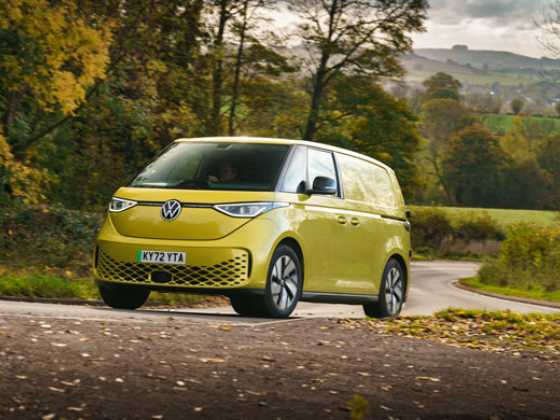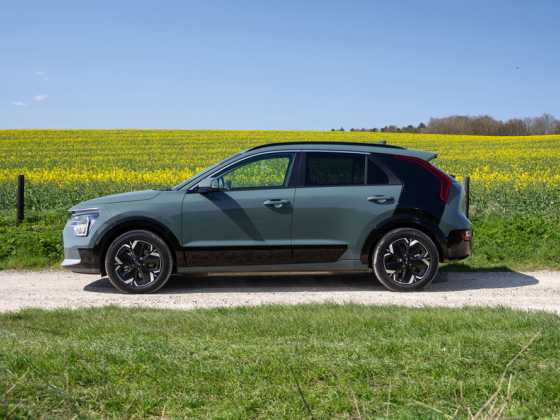Hyundai i40
The previous Hyundai i40 helped change the perceptions of the South Korean company in Europe upon its arrival in 2011. Richard Gooding finds that the latest version of its mid-size flagship car can only build on the 100,000 sales of its predecessor
 Hyundai has gone from strength to strength since the arrival of its first mass-produced South Korean car, the Pony, in 1975. Hyundai’s first mid-sized saloon, the Stellar, arrived in 1983. The front-engined rear-wheel drive car was based on Ford Cortina underpinnings and was available with four-cylinder engines allied to manual and automatic gearboxes. 1988 saw the Sonata replace the Stellar, bringing six‑cylinder engines and more luxurious fittings. Hyundai retired the Sonata in 2010, unveiling its new mid-sized family car, the i40, in 2011. With a choice of both saloon and estate body styles and with Hyundai’s new ‘fluidic sculpture’ styling, it looked much sharper than its predecessors. Refreshed in December 2014, the new i40 arrived in the UK in April 2015.
Hyundai has gone from strength to strength since the arrival of its first mass-produced South Korean car, the Pony, in 1975. Hyundai’s first mid-sized saloon, the Stellar, arrived in 1983. The front-engined rear-wheel drive car was based on Ford Cortina underpinnings and was available with four-cylinder engines allied to manual and automatic gearboxes. 1988 saw the Sonata replace the Stellar, bringing six‑cylinder engines and more luxurious fittings. Hyundai retired the Sonata in 2010, unveiling its new mid-sized family car, the i40, in 2011. With a choice of both saloon and estate body styles and with Hyundai’s new ‘fluidic sculpture’ styling, it looked much sharper than its predecessors. Refreshed in December 2014, the new i40 arrived in the UK in April 2015.
Sleek and sculpted lines
Developed in Europe, the South Korean company says that its D-segment car has played a positive part in altering both private and fleet customers’ perceptions of the brand itself. Over 100,000 i40s have been sold since its introduction, and it has earned itself a five per cent European market share in its segment. Enhanced for 2015, the new Hyundai i40 is based on its predecessor. On looks alone, the i40 Tourer (estate) deserves to do well. Sleek and sculpted lines make it look more European that some of its Far Eastern competition. A hexagonal front grille flanked by LED daytime running lights brings German rivals to mind, and the black and silver 17-inch alloy wheels on SE Nav models add a further stylish touch. A few weeks before we had the i40 on test with us, a new Volkswagen Passat Estate had passed through our hands, but we’d say the sharply-creased new i40 Tourer is arguably even better looking.
 New-found confidence
New-found confidence
The new i40 builds on the ‘new’ Hyundai image, brought in with the latest i10 (GreenFleet, issue 77), and like that car, the interior brings a new-found confidence to the South Korean’s mid-sized challenger. High-quality plastics are notable by their presence, but while not quite equalling the German brands for ultimate prestige, the new i40’s cabin is a particularly nice and comfortable place to be. Wide seats are armchair comfortable, while a brushed chrome strip across the full width of the dashboard adds to the ambience. A 553-litre boot means the i40 Tourer is one of more accommodating estate cars on the market.
High-gloss finishes lend the interior an upmarket air, while a solid build makes the big Hyundai feel built to last. The new i40 comes well-equipped with all the niceties you’d expect in a car of this class. In SE Nav specification, infotainment functions are provided by the touchscreen system which includes a good-sounding seven speaker audio system with DAB/USB/CD/MP3/aux-in capability as well as Bluetooth and voice recognition controls. A heated steering wheel and seats, dual-zone climate control, and a driver’s seat with electric adjustment and lumbar support all help the i40’s upmarket aspirations, too.
An easy-to-use satellite-navigation system also comes as standard, as do steering wheel audio and telephone controls. Auto wipers, lights and rear-view mirror plus follow-me-home lights are further high-tech flashes of convenience. A parking camera and parking guidance system is useful for city driving. Continuing the safety theme, seven airbags, active head restraints, ABS, Brake Assist/Emergency Stop Signal and Vehicle Stability Management systems are all included to keep the i40 out of trouble.
Three driving modes
A 1,685cc four-cylinder diesel engine powered our SE Nav CRDi Blue Drive test car. A maximum power output of 139bhp produced at 4,000rpm and 251b ft (340Nm) of torque between 1,700‑2,500rpm is enough to propel the i40 Tourer to 62mph from rest in 12.0 seconds and on to a top speed of 124mph. Our 129g/km test car was specified with the seven‑speed dual-clutch semi‑automatic gearbox which can’t quite match the lower emissions of the six-speed manual model, which records 114g/km. As well as steering wheel-mounted paddles, three switchable drive modes – Normal, Eco and Sport – are available to choose from. We spent most of the week in ‘Eco’ mode, which changes gear earlier for optimal economical performance.
Blue Drive signifies Hyundai’s cleanest models, and an Intelligent Stop & Go (ISG) stop-start system is standard on SE Nav 1.7 CRDi models. It’s an interesting system. Come to a halt and keep your foot on the brake and the car cuts out after a short time. The moment you release the pedal, the car starts again. There is no need to slot into neutral or put the electronic handbrake on. The clever and well-thought out system makes economical driving easy. Hyundai quotes a combined cycle fuel return figure of 56.5mpg, although we recorded 48.1mpg in ‘real-world’ conditions. On the move, the new i40 is very quiet and refined. Only wind noise from the base of the A-pillars can be heard at speed. A comfortable ride soaks up all manner of imperfections incredibly well, and the car is a very refined motorway companion.
Best-ever half-year sales
The SE Nav is a newly-introduced trim level which comes with the arrival of the 2015 i40. The range starts with S, rising through SE Nav, SE Nav Business models, topping off with Premium-spec cars. With on-the-road prices from £19,600 to £28,850, at £23,650 the SE Nav Blue Drive sits in the middle of that range. Costing £110 per year to tax after the first year, the i40 Tourer CRDi Blue Drive SE Nav offers a Benefit in Kind rate of 23 per cent. An equivalent £26,335 Ford Mondeo Titanium 2.0 Duratorq TDCi 150 Estate with Powershift Auto gearbox might eke out a few more miles from every gallon, but will cost low-rate tax payers more. The £28,390 Volkswagen Passat SE Business 2.0 TDI meanwhile, sits one VED band lower with fewer emissions.
Hyundai sells 5,000 i40s per year, and around 3,500 of those are Tourer models. Around 40 per cent of those are expected to be in SE Nav trim as tested here. Hyundai has recently recorded its best-ever half-year sales in Europe, with 237,221 registrations in the first six months of this year. On the evidence of both the New Generation i10 and the new i40 tested here, Hyundai’s new product offensive is driving the sales leap. A five-year unlimited mileage warranty as standard – which includes five years of roadside assistance and five years of annual vehicle health checks – could be another reason the South Korean company is doing well. A practical, comfortable and good value proposition, the new i40 Tourer is a more than worthy competitor to the more established brands, and we can only see Hyundai’s sales improving still further.
Further information
tinyurl.com/p9v5uja









